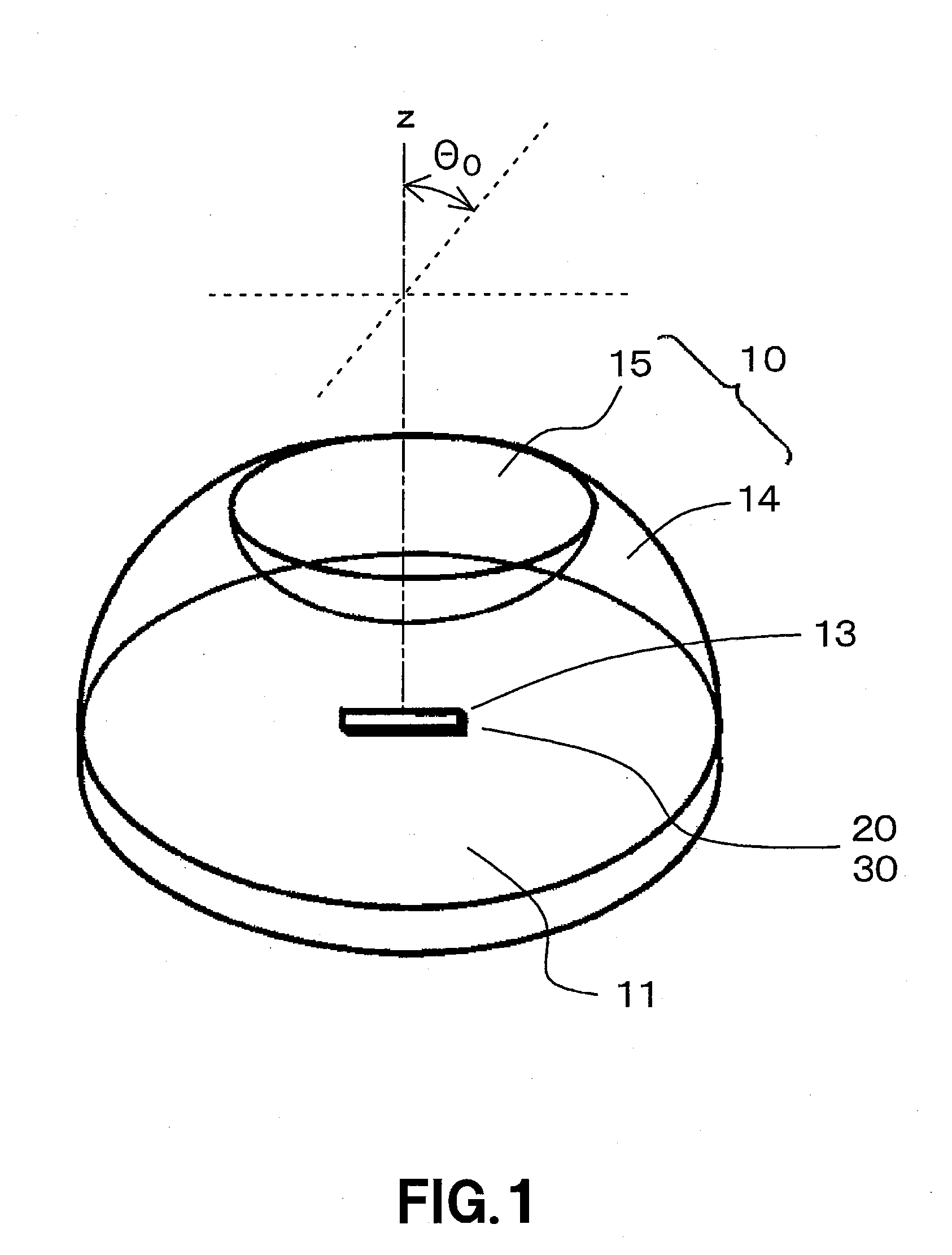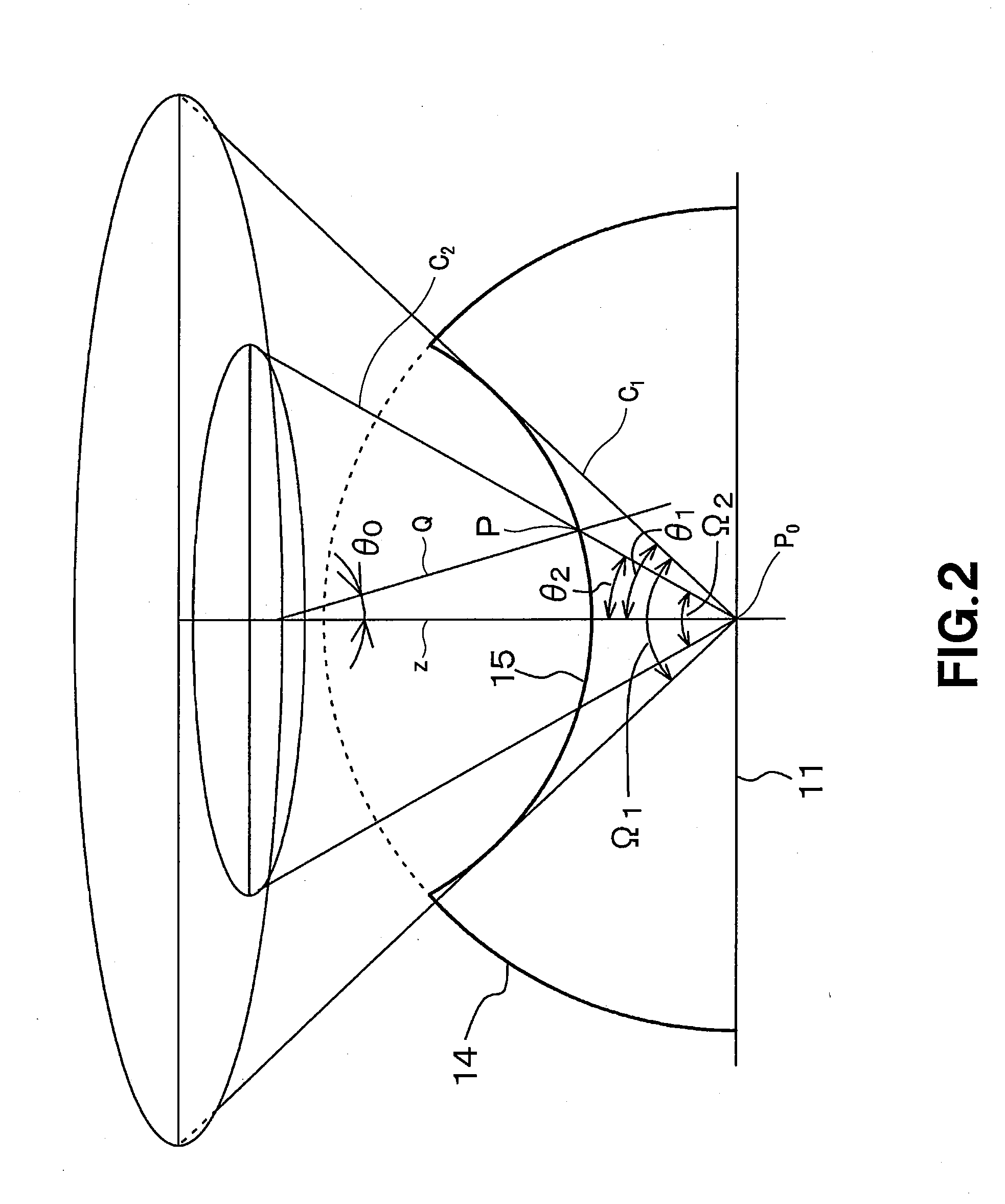Light-emission lens, light-emitting element assembly, sheet-shaped light source device and color liquid crystal display assembly
a technology of light-emitting elements and assembly, which is applied in the direction of lenses, lighting and heating apparatus, instruments, etc., can solve the problems of high throughput production and lens defects, and achieve the effect of high productivity, simple shape and mass production
- Summary
- Abstract
- Description
- Claims
- Application Information
AI Technical Summary
Benefits of technology
Problems solved by technology
Method used
Image
Examples
embodiment 1
[0084]The Embodiment 1 includes the lenses embodied in the first to third modes of the present invention, light-emitting element assemblies embodied in the first to third modes of the present invention, surface light source devices embodied in the first to third modes of the present invention and color liquid crystal display assemblies embodied in the first to third modes of the present invention. It should be noted that an “apparatus” embodied in any of the first to third modes of the present invention will be referred to as an “apparatus according to Embodiment 1” hereunder. FIG. 1 is a schematic perspective view of the lens according to Embodiment 1, FIG. 2 is a conceptual diagram for explaining the lens according to Embodiment 1, FIG. 3 is a schematic sectional view of the lens according to Embodiment 1, FIGS. 4A, 4B and 6B are schematic sectional views, respectively, of a light-emitting diode, FIGS. 5A, 5B and 6A are conceptual diagrams, respectively, of a light-emitting elemen...
embodiment 2
[0148]Embodiment 2 is a variant of Embodiment 1. In Embodiment 2, the expression (3) defining the lateral face 14 in Embodiment 1 was altered into an expression (10) which will be given below. However, the function fS(z) is the same as that having been explained concerning Embodiment 1 and the coefficients k0 to k4 are same in value as those in Table 1. In Embodiment 2, the value “α” in the expression (10) is given by “0≦α≦0.875”. It should be noted that when α=0, the lateral face 14 is the same as that in Embodiment 1.
r=(1−α)·fS(z)+k′0 (10)
When α is 0, 0.25, 0.50, 0.75, 0.875 or 1.00, the expression (10) is given by “P1(r1, z1)=(1.52, 1.52)”. The value of k′0 was determined for the lateral face 14 given by the expression (10) to intersect with that given by the expression (1). FIG. 23 shows visible outlines of the lateral and top faces, taken along the x-z plane, of the lens. In FIG. 23, a straight line extending vertically from a point where the x-coordinate value is 1.52 indicat...
PUM
| Property | Measurement | Unit |
|---|---|---|
| refractive index | aaaaa | aaaaa |
| wavelength | aaaaa | aaaaa |
| wavelength | aaaaa | aaaaa |
Abstract
Description
Claims
Application Information
 Login to View More
Login to View More - R&D
- Intellectual Property
- Life Sciences
- Materials
- Tech Scout
- Unparalleled Data Quality
- Higher Quality Content
- 60% Fewer Hallucinations
Browse by: Latest US Patents, China's latest patents, Technical Efficacy Thesaurus, Application Domain, Technology Topic, Popular Technical Reports.
© 2025 PatSnap. All rights reserved.Legal|Privacy policy|Modern Slavery Act Transparency Statement|Sitemap|About US| Contact US: help@patsnap.com



